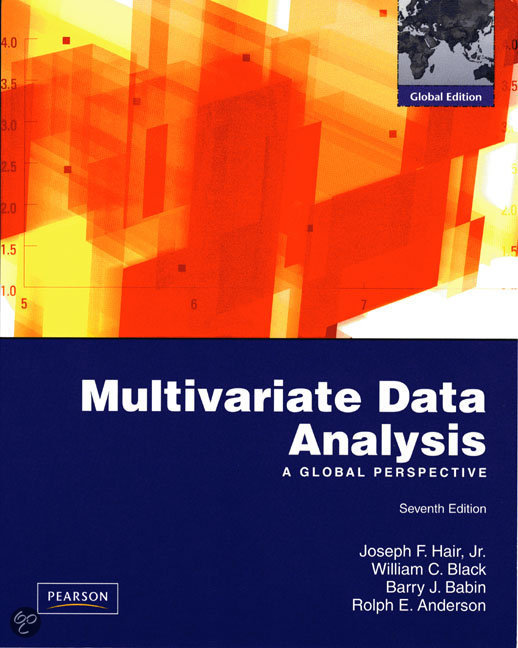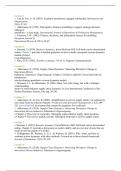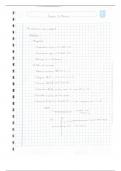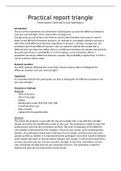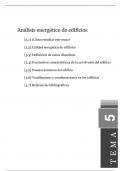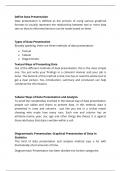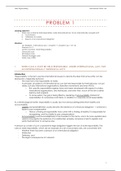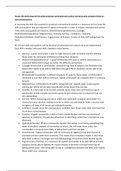Content
Summary 1ZM31...............................................................................................................................1
Summary 1ZM31...............................................................................................................................3
Module 1: Data Exploration and Exploratory Factor Analysis............................................................3
Readings.............................................................................................................................................3
Chapter 1 – Overview of Multivariate Methods.............................................................................3
Chapter 2 – Examining your data....................................................................................................5
Chapter 3: Exploratory Factor Analysis.........................................................................................12
Lecture 1 – Data exploration............................................................................................................18
Lecture 2...........................................................................................................................................19
Tutorials............................................................................................................................................21
Tutorial 2......................................................................................................................................21
Module 2: Multiple and Logistic Regression....................................................................................21
Readings...........................................................................................................................................21
Chapter 4 – Multiple Linear Regression........................................................................................21
Chapter 6 – Logistic Regression: Regression with a Binary Dependent Variable..........................29
Lecture 3: Multiple Linear Regression..............................................................................................33
Lecture 4 – The Logit Model.........................................................................................................36
Tutorial 3..........................................................................................................................................37
Module 3: Confirmatory Factor Analysis & Structural Equation Modelling......................................38
Readings...........................................................................................................................................38
Chapter 11 – Structural Equations Modelling Overview...............................................................38
Chapter 12: Confirmatory Factor Analysis....................................................................................45
Chapter 13 – Testing Structural Equations Models.......................................................................48
Lectures............................................................................................................................................50
Micro Lectures..................................................................................................................................53
Tutorials............................................................................................................................................54
Module 1: Data Exploration and Exploratory Factor Analysis............................................................2
Readings.............................................................................................................................................2
Chapter 1 – Overview of Multivariate Methods.............................................................................2
Chapter 2 – Examining your data...................................................................................................4
Chapter 3: Exploratory Factor Analysis.........................................................................................10
Lecture 1 – Data exploration............................................................................................................15
, Lecture 2...........................................................................................................................................16
Tutorials...........................................................................................................................................18
Tutorial 2......................................................................................................................................18
Module 2: Multiple and Logistic Regression....................................................................................18
Readings...........................................................................................................................................18
Chapter 4 – Multiple Linear Regression........................................................................................18
Chapter 6 – Logistic Regression: Regression with a Binary Dependent Variable..........................26
Lecture 3: Multiple Linear Regression..............................................................................................30
Lecture 4 – The Logit Model.........................................................................................................33
Tutorial 3..........................................................................................................................................34
Module 3: Confirmatory Factor Analysis & Structural Equation Modelling......................................35
Readings...........................................................................................................................................35
Chapter 11 – Structural Equations Modelling Overview...............................................................35
Chapter 12: Confirmatory Factor Analysis....................................................................................42
Chapter 13 – Testing Structural Equations Models.......................................................................45
Lectures............................................................................................................................................47
Micro Lectures..................................................................................................................................49
Tutorials...........................................................................................................................................50
P a g i n a 2 | 55
, Summary 1ZM31
Module 1: Data Exploration and Exploratory Factor
Analysis
Readings
Chapter 1 – Overview of Multivariate Methods
Multivariate analysis: all statistical techniques that simultaneously analyse multiple measurements
on individuals or objects under investigation
- Often based on univariate analyses like single-variable distributions, cross-classifications etc.
- Factor analysis: identifies the structure underlying a set of variables
- Discriminant analysis: differentiates among groups based on a set of variables
Basic concepts of multivariate analysis:
- The variate: building block of multivariate analysis, a linear combination of variables with
empirically determined weights. Can be stated mathematically through:
- Measurement scales: data can be classified into one of two categories:
o Nonmetric – Qualitative data
Describe differences in type or kind by indicating the presence or absence of
a characteristic or property
Can either have nominal or ordinal scales:
Nominal scale: assigns numbers as a way to label or identify subjects
or objects numbers assigned have no quantitative meaning
Ordinal scale: variables can be ordered or ranked in relation to the
amount of the attribute possessed ranked ordering
o Metric – Quantitative data
Metric data are used when subjects differ in amount or degree on a
particular attribute. Has two different scales:
Interval scale
Ratio scale
Understanding different measurement scales is important while:
1. Researcher must identify the measurement scale of each variable used, to prevent
inappropriate use
2. Measurement scale is critical in determining which multivariate techniques are the most
applicable to the data
Measurement error: degree to which the observed values are not representative of the “true” values
- Measurement error adds noise to the observed or measured variables
-
To reduce measurement error, the researcher addresses two important characteristics of a measure:
- Validity: degree to which a measure accurately represents what it is supposed to
o Ensure validity by having a thorough understanding of what is to be measured and
then making the measurement as correct and accurate as possible
- Reliability: degree to which the observed variable measures the true value and is error free
Summated scales: several variables are joined in a composite measure to represent a concept
P a g i n a 3 | 55
, Statistical significance versus statistical power
Type I error (alpha): probability of rejecting the null
hypothesis when it is actually true generally
referred to as a false positive
Type II error (beta): probability of not rejecting the
null hypothesis when it is actually false
Power: 1 - beta, probability of correctly rejecting
the null hypothesis when it should be rejected
Power is determined by three factors:
1. Effect size: actual size of the effect, helps researchers determine whether the observed
relationship is meaningful
2. Alpha: as alpha becomes more restrictive, power decreases
3. Sample size: increased sample sizes always produce greater power for the statistical test
Dependence technique: a technique in which a variable or set of variables is identified as the
dependent variable to be predicted or explained by other variables known as independent
variables.
Example is multiple regression
Different dependence techniques can be categorized by two characteristics:
1. Number of dependent variables
2. Type of measurement scale employed by the variables
Interdependence techniques: variables cannot be classified as either dependent or independent. All
the variables are analysed simultaneously in an effort to find an underlying structure to the entire set
of variables or subjects.
Types of multivariate techniques
Various types of multivariate analysis:
1. Principal components and common factor analysis
Factor analysis is a statistical approach that can be used to analyse interrelationships among
a large number of variables and to explain these variables in terms of their common
underlying dimensions
2. Multiple regression and multiple correlation
Appropriate method when the research problems involves a single metric dependent
variable presumed to be related to two or more metric independent variables. Has the
objective to predict the changes in the dependent variable in response to changes in the
independent variables.
3. Multiple discriminant analysis and logistic regression
Used when the single dependent variable is dichotomous (male-female) or multichomotous
(high-medium-low). Used to understand group differences and to predict the likelihood that
an entity will belong to a particular class or group based on metric independent variables.
P a g i n a 4 | 55

